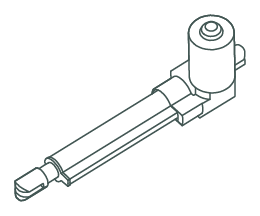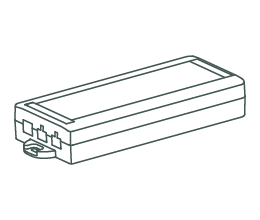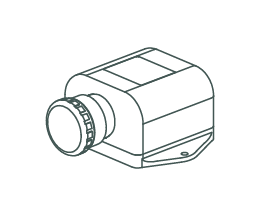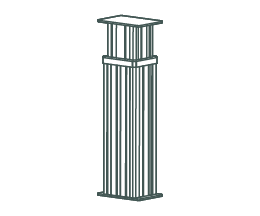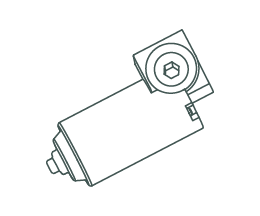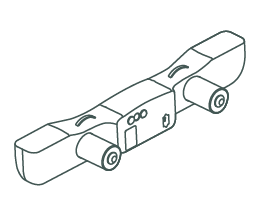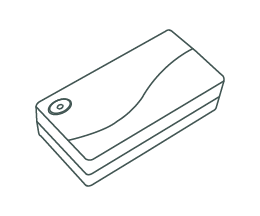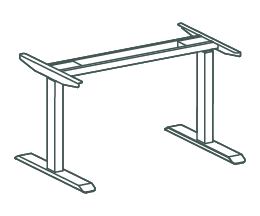FAQ
Duty cycle
Duty cycle is a percentage of "working time" divided by "working + resting time", normally expressed in %, which defines the maximum operation frequency for each product according to its limitation, since actuators are working intermittently, not continuously without any rest.
Duty cycle is a percentage of "working time" divided by "working + resting time", normally expressed in %, which defines the maximum operation frequency for each product according to its limitation, since actuators are working intermittently, not continuously without any rest.
Dynamic load.
Dynamic load indicates the direct load each actuator is able to carry, and the maximum dynamic load specifies the maximum value designed for each actuator. In some cases, it's different in the two directions ( push and pull force).
Dynamic load indicates the direct load each actuator is able to carry, and the maximum dynamic load specifies the maximum value designed for each actuator. In some cases, it's different in the two directions ( push and pull force).
Hall sensor positioning feedback
Hall effect sensor provides signal feedback from the actuator to the control system, for application that requires specific positions, or synchronous movement. Resolution varies depending on the actuator models required.
Hall effect sensor provides signal feedback from the actuator to the control system, for application that requires specific positions, or synchronous movement. Resolution varies depending on the actuator models required.
Ingress Protection Rating (IP Code)
Ingress Protection Rating or IP Code is defined in IEC 60529 which classifies and provides a guideline to the degree of protection provided by mechanical casings and electrical enclosures against intrusion, dust, accidental contact, and water.
IP codes always start with the letters IP, usually followed by two numbers. The first number indicates the level of protection of the enclosed device against the ingress of solid foreign objects and against access to hazardous parts. The second number indicates the ability of the device casing to resist liquid penetration.
Please refer to IEC 60529 for the definition of test conditions for each level. However, unless specific exceptions are stated in the product documentation, Moteck's claimed product IP ratings are based on passing ratings under static (non-action) test conditions.
Ingress Protection Rating or IP Code is defined in IEC 60529 which classifies and provides a guideline to the degree of protection provided by mechanical casings and electrical enclosures against intrusion, dust, accidental contact, and water.
IP codes always start with the letters IP, usually followed by two numbers. The first number indicates the level of protection of the enclosed device against the ingress of solid foreign objects and against access to hazardous parts. The second number indicates the ability of the device casing to resist liquid penetration.
Please refer to IEC 60529 for the definition of test conditions for each level. However, unless specific exceptions are stated in the product documentation, Moteck's claimed product IP ratings are based on passing ratings under static (non-action) test conditions.
Manual release
Manual release is an option normally used for UP & DOWN movements of patient lift application. When there's power outage of the system, the nursing staff can still bring the patient down gradually by turning the manual release mechanism.
Manual release is an option normally used for UP & DOWN movements of patient lift application. When there's power outage of the system, the nursing staff can still bring the patient down gradually by turning the manual release mechanism.
Potentiometer (POT) positioning feedback
Potentiometer, driven by a separate set of gears, change its resistance as the actuator moves forwards or backwards. The resistance difference could be used by the control system as positioning feedback for application that requires specific positions of actuators.
Potentiometer, driven by a separate set of gears, change its resistance as the actuator moves forwards or backwards. The resistance difference could be used by the control system as positioning feedback for application that requires specific positions of actuators.
Push only (electrical)
This is the type of push-only design using a micro-switch that cuts the current whenever there's pull force.
This is the type of push-only design using a micro-switch that cuts the current whenever there's pull force.
Push only (mechanical)
Push-only design nullifies the force in the pull direction. When the push-only actuator encounters an obstacle during the retracting movement, the extension tube will be separated from the nut that carries it in the push direction.
Push-only design nullifies the force in the pull direction. When the push-only actuator encounters an obstacle during the retracting movement, the extension tube will be separated from the nut that carries it in the push direction.
PWM
PWM stands for pulse width modulation, which is used in the software of control box including a MCU. This enables actuator movement at different speed depending on the application, and is also needed when soft start or soft stop is required.
PWM stands for pulse width modulation, which is used in the software of control box including a MCU. This enables actuator movement at different speed depending on the application, and is also needed when soft start or soft stop is required.
Quick release
Quick release is an option typically used for head adjustment of medical or homecare bed application. In case of emergency where patients require immediate treatment, such as CPR, etc., quick release allows the bed to go back to the flat position immediately.
Quick release is an option typically used for head adjustment of medical or homecare bed application. In case of emergency where patients require immediate treatment, such as CPR, etc., quick release allows the bed to go back to the flat position immediately.
Reed sensor positioning feedback
Reed sensor provides also signal feedbacks, signal feedback from the actuator to the control system, for application that requires specific positions, or synchronous movement. Resolution varies depending on the actuator models required.
Reed sensor provides also signal feedbacks, signal feedback from the actuator to the control system, for application that requires specific positions, or synchronous movement. Resolution varies depending on the actuator models required.
Safety nut
Safety nut is a metal part attached to the plastic nut from the underneath in the tube assembly. In case of breakage of the plastic nut, the safety nut can keep the actuator at the failure position, instead of having the actuator go down too fast.
Safety nut is a metal part attached to the plastic nut from the underneath in the tube assembly. In case of breakage of the plastic nut, the safety nut can keep the actuator at the failure position, instead of having the actuator go down too fast.
Self-locking force
Self-locking force describes the force that the actuator can hold right after it stops moving.
Self-locking force describes the force that the actuator can hold right after it stops moving.
SMPS
SMPS is the abbreviation of "switching mode power supply", and is a universal type of power supply that can take 100-230VAC as input voltage, covering various AC voltage used in most countries, and provide low DC voltage at the output side. In our case, mostly it's 29VDC coming out of SMPS.
SMPS is the abbreviation of "switching mode power supply", and is a universal type of power supply that can take 100-230VAC as input voltage, covering various AC voltage used in most countries, and provide low DC voltage at the output side. In our case, mostly it's 29VDC coming out of SMPS.
Static load.
Maximum static load is the maximum load the actuator can hold while it's not moving, and at this stage the actuator does not go in the opposite direction due to this load.
*This is the maximum affordable load within a limited amount of time.
Maximum static load is the maximum load the actuator can hold while it's not moving, and at this stage the actuator does not go in the opposite direction due to this load.
*This is the maximum affordable load within a limited amount of time.








